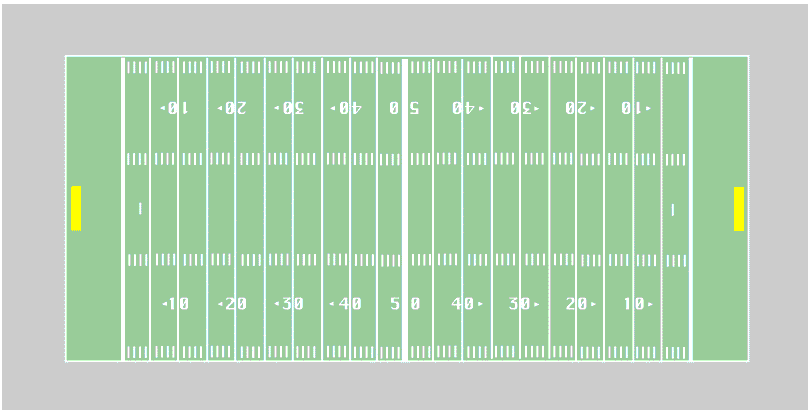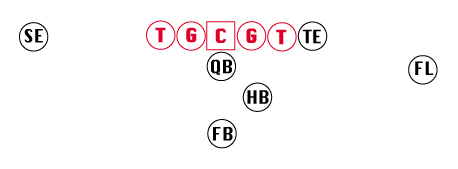 AMERICAN FOOTBALL
AMERICAN FOOTBALL 
This page is about a basic
rules of American Football Game.
How to play
Football is
a game of territory and strategy.
22 players are on the field at
one time — 11 per team.
A game is made up of four quarters,
plus a sudden-death overtime if the score is tied after regulation time.
A 12-minute halftime falls between
the second and third quarters.
Each team is entitled to three
time outs per half.
Field
The Three "Teams" Within a Football
Team
Offense — controls
the movement of the ball and attempts to score touchdowns (worth 6 points)
by passing or running.
Defense — attempts to stop
the offense from scoring by tackling runners, deflecting passes, intercepting
passes, or causing fumbles.
Special Teams — a group
of specialists who take the field during kicking situations: punts, field
goals, extra points and kickoffs.
The Offense
The offense
attempts to score by passing or running the ball.
Positions
Quarterback
— leader of the team, high profile, executes most plays.
Center — lines up over the
football, in the center of the offensive line; snaps the ball to the quarterback
to begin each play.
Guards — each offensive
team has two guards who line up on either side of the center.
Tackles — each offensive
team has two tackles who line up outside the guards.
Tight end — lines up just
outside the tackle (close or tight).
Wide Receivers — line up
10-15 yards wide of the offensive line; receive passes thrown by the quarterback.
Running Backs — line up
behind the quarterback in the backfield; run with the ball, block, and receive
passes from the quarterback.
Formation
The Defense
The defense
attempts to prevent scoring opportunities by tackling offensive players short
of a first down or causing the offense to lose control of the ball (called
turnovers).
Positions
Defensive
Tackle — lines up on the defensive line; responsible for stopping the
offensive charge; either one or two defensive tackles play depending on defensive
formation.
Defensive Ends — line up
on the defensive line; responsible for containing the outside running game
and for rushing the quarterback; a successful rush of the quarterback results
in a sack; two defensive ends play at all times (see definitions).
Linebackers — line up 2-3
yards in back of the tackles and ends; responsible for stopping the run and
also for covering receivers on passing plays; occasionally rush the
quarterback (referred to as a blitz).
Cornerbacks — line up opposite
wide receivers; responsible for covering receivers and providing support
in stopping the running game; typically two cornerbacks play depending
on the defensive and offensive formations.
Safeties — line up 8-10
yards from the line of scrimmage; responsible for providing support in pass
coverage (essentially the safety net against a long gain of yardage by the
offense); typically two safeties play depending on the defensive
and offensive formations.
Formation
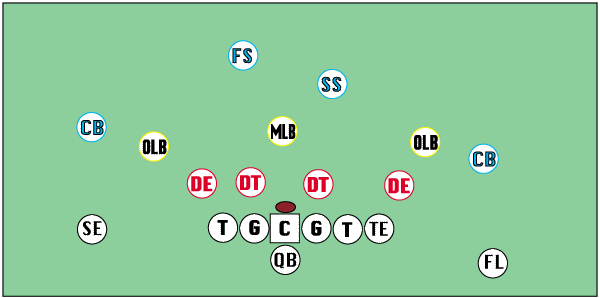
Tackling
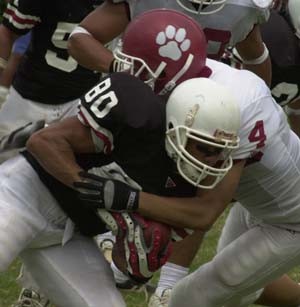
|
Sack !
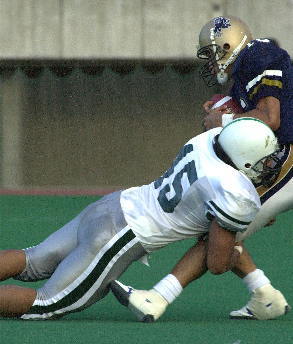
|
The Special Teams
Special Teams
are responsible for kicking a ball or returning a kicked ball from the other
team, and are frequently labeled kicking teams, or receiving.
Kickoffs — start the game;
start the second half; start play after team scores.
Field-Goal Attempt — an
effort by the offensive special team to score 3 points by kicking the ball
between the uprights.
Punt — an exchange of possession
in which the offensive team tries to pin the ball in the defensive team's
end of the field.
Kick Returns — after the
kicking team attempts to catch it and advance as far as possible toward the
opposite end zone.
Punt1
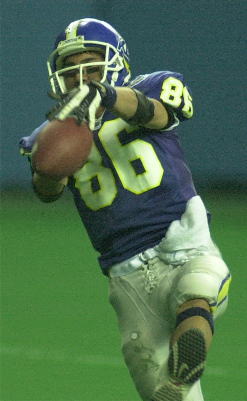
|
Punt2
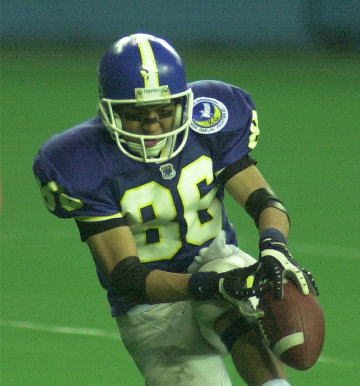
|
Field-Goal Kick

|
DOWNS
Downs are a series of offensive
plays.
The offense has four downs to
move the ball 10 yards.
Upon moving the ball 10 yards,
the offensive team receives another set of downs.
First Down — first try (first
and 10 yards to go).
Second Down — second try.
Third Down — third try.
Fourth Down — last and final
try; with options (see below).
Go For It — try to get
the yardage necessary to attain a first down or a touchdown.
Kick a Field Goal — attempt
to score three points by kicking the ball between the uprights.
Punt — kick the ball to
the other team in hopes of keeping it as far away from your goal line as
possible.
SCORING
Touchdown: six points
Running the ball or completing
a pass to a player who carries the ball into the opponent's end zone.
Extra Point: one or two points
An effort to score points after
a touchdown by either:
A. Kicking the ball
through the uprights (one point).
B. Running or completing
a pass to a player who carries the ball into the end zone from two yards
away (two points due to difficulty).
In either case, the offensive
team gets only one opportunity to execute a point after a touchdown.
Field Goal: three points
Field goals usually are attempted
in 4th-down situations (last attempt or try in a series of downs).
Special teams will attempt a field
goal if it feels the kicker is close enough to the end zone to kick the ball
through the uprights.
A field-goal attempt must clear
the crossbar and go between the uprights.
Safety: two points
Safeties are the rarest of all
the scoring opportunities. The defensive team is credited with two points
if it tackles an offensive player in his own end zone.
Don't confuse the term "safety"
with the defensive position.
